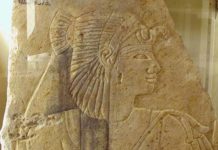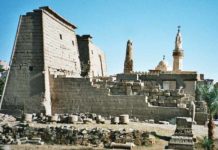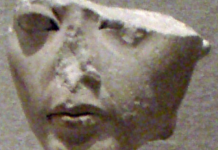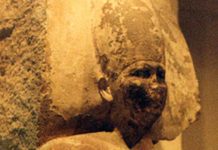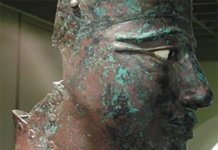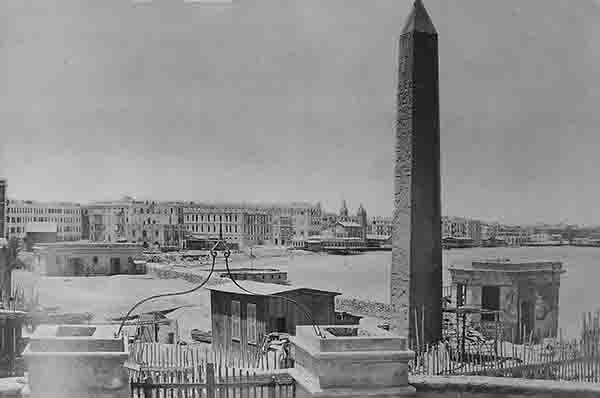
How close to the truth are the myths told on stage, screen, and page about the extravagance of Alexandria and its seductive Greek queen, Cleopatra?
Despite all the plays, books, movies, and stories told by the predecessors of Egypt’s last pharaoh, Horace may have come closest to Cleopatra’s truth in his poem about the defeat of the “demented queen . . . with her polluted mob of retainers.”
A cruise up the Nile was immensely popular long before Cleopatra and Julius Caesar made the journey together in 47 BC to visit the Valley of the Kings and the ruins of Thebes. Alexandria was already the jewel of the Mediterranean, famous for its spectacular luxuries and infamous for its rich, unruly citizens. In the entire Roman Empire, it was the only province where travel was restricted. The great city was the opposite of down-to-earth Rome, a city that was a dull, provincial backwater in comparison.
Life in Ancient Alexandria
Once the tempestuous Cleopatra came to power (51 to 30 BC), Rome became even more wary of trouble from its great tourist center. Cleopatra’s Ptolemic dynasty took control of the new city after Alexander died in 323 BC, when one of his top generals, Ptolemy, a Macedonian Greek, hijacked the hero’s corpse for burial in Alexandria. This publicity stunt created the eternal association of the new city with the greatest conqueror of the ancient world.
Ptolemy I was the first ruler in a line of great builders. He commissioned the 300 hundred feet tall lighthouse at Alexandria’s harbor entrance, one of the wonders of the ancient world as was the wondrous library that housed the greatest collection of pagan texts. It stood near the Museum, or the “Place of the Muses,” and the royal palace. All these wonders were faithfully recreated from photos of the barnacled sculptures and remains of the ancient city that emerged from the sea to build the movie sets of Alejandro Amenábar’s Agora.
Rome’s first emperor, Octavian, who later became known as Augustus, visited Alexander’s tomb in 30 BC once he finally defeated Cleopatra and her partner and his rival, Mark Antony. It was said that he celebrated by breaking off a chunk of the hero’s mummified nose for a souvenir.
Who was the Real, Live Cleopatra?
So much of the myth of Alexandria is true. How much about Cleopatra according to Shakespeare, Shaw, DeMille, Mankiewicz, and the 1999 TV miniseries is accurate? How will Scott Rudin ask the white Oscar Winner Anjelina Jolie to play the mythologized queen in his upcoming biopic remake?
The myth is based on Plutarch’s tales of Antony, which begins, “Such being his temper, the last and crowning mischief that could befall him came in the love of Cleopatra, to awaken and kindle to fury passions that as yet lay still and dormant in his nature, and to stifle and finally corrupt any elements that yet made resistance in him of goodness and a sound judgment.”
Thereafter, Cleopatra was forever portrayed as a vain and histrionic she-devil who used her wiles to seduce and manipulate men. Plutarch did compliment her for speaking at least eight languages, but he wrote nothing else good about her. But what did the famous Roman biographer know? He was writing at the end of the first century, some 170 years after Cleopatra’s death.
What is True? What is Myth?
Did she bathe in asses’ milk? Were her kitchens as extravagant as Plutarch reported where eight boars were cooking on spits at the same time to feed her party guests? Was she the seductive Oriental despot that Augustus demonized? Did she really go to so much tedious trouble to find the right snake for her suicide? That sad story may be accurate, even though it was told only by her enemies.
She was the daughter of Ptolemy XXII, but there is no record of her mother or the date of her birth. She came to power at age 19. Rome had replaced her Ptolemic dynasty and was demanding tribute to keep them from invading Egypt, an unruly Roman province.
Plutarch claimed that she was 39 when the snake killed her in 30 BC, but he also wrote that she ruled Egypt with Marc Antony for 14 years. But then Plutarch writes that she didn’t meet Antony until 41 BC, meaning they only ruled together for about nine years.
A Tale of Two Cleopatras
Stacy Schiff, author of Cleopatra: A Life, describes her as an independent queen who effectively used her intellectual and sexual powers to manipulate Rome’s rulers. In his biography, Antony and Cleopatra, historian Adrian Goldsworthy uses Plutarch’s dubious evidence to conclude that she was irrelevant to the power struggles in Rome. He pictures her as a has-been.
At least five biographies of the famous queen have been published in English over the past five years. Yet, nothing new has been uncovered about her since Plutarch’s biography and absolutely nothing is known about her early life.
She supposedly gave birth to Julius Caesar’s son, Caesarion, but no one really knows for a fact when the boy was born or even whether he was conceived with the Roman emperor or some other lover. During those long, terrible days that she spent dying from the snake’s venom, did she really mutter the words, over and over again (as was reported by her enemies), “I shall not be led in triumph”? No one knows.
New York and London Stay Connected to Cleopatra Today
The West retains two connections to the ancient world of Cleopatra and her Alexandria. Two obelisks, known as Cleopatra’s Needles, were made around 1450 BC and then transferred, perhaps by Augustus, to create Julius Caesar’s shrine in Alexandria.
Cleopatra must have planned and inaugurated their erection in Alexandria just before her death. One was relocated at the end of the nineteenth century to Central Park. The other now stands on the Thames Embankment in London. Perhaps the real Cleopatra may be experienced there.
Reference:
- Schiff, Stacy, Cleopatra: A Life, Little, Brown & Co., New York, NY, 2010
- Goldsworthy, Adrian, Antony and Cleopatra, Yale University Press, New Haven, CT, 2010.


